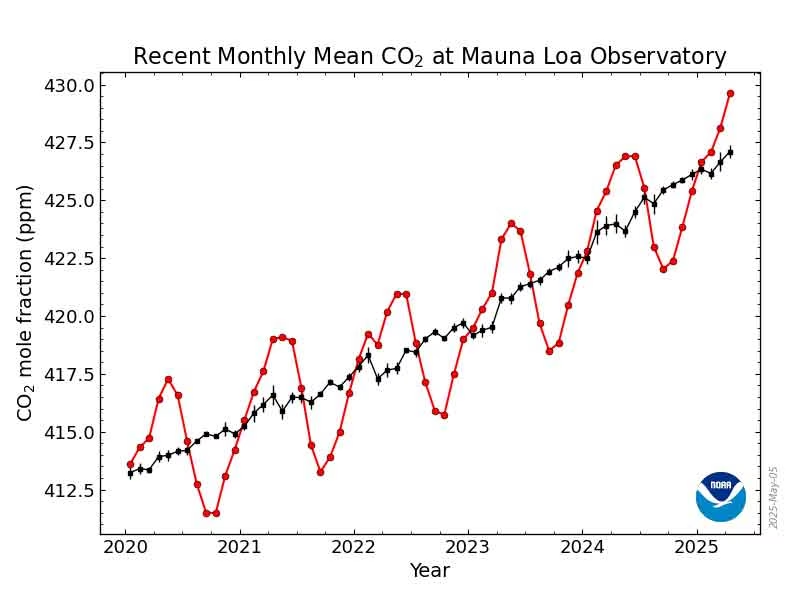
MIDDLETOWN – In mid-March, Lee Zeldin, President Donald Trump’s newly confirmed administrator of the US Environmental Protection Agency, announced that the EPA was undertaking a formal reconsideration of its “endangerment finding.” The Trump administration has made no secret of its desire to rescind the 2009 declaration that greenhouse-gas (GHG) emissions endanger “both the public health and the public welfare of current and future generations.” In other words, Trump wants to walk back the US government’s assertion that climate change is real and caused by humans.
This scientific finding stemmed from a 2007 US Supreme Court ruling that various GHGs are pollutants covered by the Clean Air Act. The Court held that the EPA must determine whether GHG emissions from new motor vehicles “cause[s], or contribute[s] to, air pollution which may reasonably be anticipated to endanger public health or welfare” (emphasis added). To be clear, the ruling did notcommand the EPA to regulate GHG emissions. But if the agency found that emissions caused or contributed to air pollution, the Clean Air Act would require it to establish air-quality standards that accurately reflect “the latest scientific knowledge.”
To make this determination, the EPA had to survey the scientific literature, assess existing and emerging risks based on that science, and evaluate the costs and benefits associated with alternative options for prospective regulation. The agency then posted a preliminary draft of its findings and policy options for a 60-day public-comment period, and was required to respond publicly to each comment while revising the document.
After publishing a final version of its endangerment and “cause or contribute” findings – the latter recognizes that GHG emissions from new motor vehicles contribute to harmful air pollution – in December 2009, the EPA began to design its response and implement appropriate measures. But the pushback was almost immediate. By July 2010, the agency had received and denied ten petitions for reconsidering both findings. In June 2012, after a group of lawsuits, the US Court of Appeals for the District of Columbia Circuit upheld the endangerment finding. Later, in April 2022, the EPA denied another four petitions for reconsideration.
But now, with a US president who calls climate change a “hoax” and is following a governing blueprint that seeks to roll back US environmental and climate policy in the name of fossil-fuel extraction and deregulation, the EPA has abruptly changed course. The stated rationale for reconsidering the endangerment finding is tenuous, based in part on false claims about the climate agenda – most notably that it has imposed trillions of dollars in costs on Americans.
Still, the EPA faces a difficult road ahead. Before the agency can reach the opposite conclusion – that GHG emissions do not endanger public health and welfare – it must undertake the same rigorous, multi-step process that produced the 2009 finding. And now it must contend with a much larger body of scientific evidence for the observed and projected damages from these emissions: the past 16 years have produced reams of research pointing to GHG emissions’ harmful effects.
The severity of the climate crisis became clearer in 2019, when 15 scientists published a review of the then-current literature in Science. They concluded that, since 2009, “the amount, diversity, and sophistication of the evidence” had “increased markedly, clearly strengthening the case for endangerment.” In 2023, the sixth assessment from the Intergovernmental Panel on Climate Change brought home the message, finding that “adverse impacts from human-caused climate change will continue to intensify.” The report emphasized that the effects were worsening at a faster pace than ever before.
Simply embarking on an official reassessment of the endangerment finding may produce the Trump administration’s desired effect: a massive retreat from climate action at the federal level. That is already happening to a certain degree. The EPA has announced plans to eliminate its scientific-research arm, even though almost every US agency depends on the climate science that it produces.
Moreover, the new leaders of the many government departments that support research on global warming – from Health and Human Services (which houses the National Institutes of Health) to Commerce (which houses the National Oceanic and Atmospheric Administration) – largely share Trump’s climate skepticism. The EPA’s reconsideration of the endangerment finding will give them cover to defund existing scientific programs, discontinue the collection of valuable data series, reject creative research proposals, freeze government hiring, and undertake large-scale personnel reductions.
Subscribe to Our Newsletter
Get the latest CounterCurrents updates delivered straight to your inbox.
The Trump administration’s disdain for established science, coupled with dramatic cuts to research funding for universities, NGOs, and the private sector, may end up discouraging an entire generation of young people from studying climate change. Whatever the EPA decides about the endangerment finding, the process is almost certain to drag on, involve multiple court cases, and make its way to the Supreme Court – by which point, the damage may already be done. Dismantling the world’s most prodigious climate-research program threatens to harm Americans – and everyone else.
Gary Yohe is Professor Emeritus of Economics at Wesleyan University.
Copyright: Project Syndicate, 2025.
www.project-syndicate.org














































